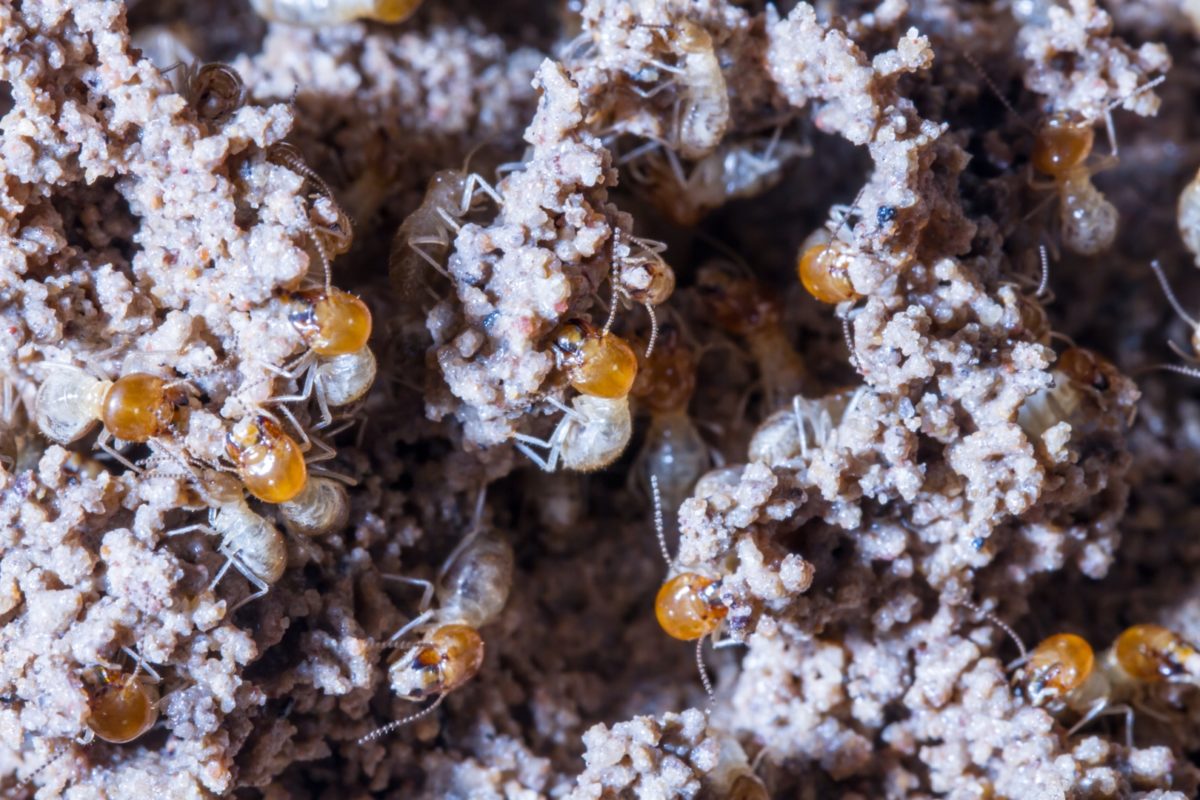We’ve talked about signs of termite activity in the past and provided detailed descriptions on termite members. So today we’re going to dive a bit deeper into termite responsibilities and talk about which termites you are most likely to encounter and where.
You may recall that termites don’t actually live in isolation, despite the fact that many of the termites are without eyes. They are in fact social creatures that work together collectively. A vast network of beings with no more than three socially responsible roles for each different termite member.
Although there is one member of the colony that begins their life as an outcast, the nymph. Their social responsibility is undefined at the beginning of their life. It is here we begin our journey into identifying the nymphs and the role they have yet to play in their colony.
Reproductive Termite Member
Out of all the roles and responsibilities of a termite colony, the “reproductives” are among some of the most complex in the insect world. Normally, when we think of a colony of insects, we learn there is a queen and king member.
But when it comes to a reproductive termite member, the collective goal is to reproduce and preserve the balance of the colony. Each new termite member to a colony begins as a nymph. With no particular role or responsibility.
Nymphs are Out-Caste Termite Member
To achieve reproductive balance all termites phase from termite eggs, or termite larvae, into young nymphs into older nymphs. These hatchlings are easily identifiable by color and size.
Young nymphs, or baby termites, are generally smaller than their older nymph counterparts, which are still tiny. Their color though remains unchanged from the larvae state, so they are generally whitish in color to almost translucent.
Essentially, their role is undetermined and unassigned. The uncertainty of their role becomes defined when there is an imbalance in the ratio of termite workers to soldiers and even in the role of the reproductives. Say for example, a queen or king dies, the nymph will move into a reproductive role, whether advanced or supplementary.
Reproductive Termites
If a nymph should advance into a reproductive role, there are two directions that role can lead. The first are known as advanced reproductives. The second are the supplementary reproductives.
For advanced reproductives, nymphs will grow substantially larger in size. Almost three times their size as a mature nymph. In fact, reproductive nymphs are even larger than soldier or worker termites.
From there, a reproductive nymph’s role may stagnate, or slow, to care and nurture for larvae, younger nymphs, as well as the queen and the king. If lucky they advance to the alate [a-late] role by growing wings and will soon leave the colony to mate and form colonies of their own.
But, it’s not likely you will see a king or queen. They do not re-emerge after mating and have established their colony. In fact the only time you might encounter an alate is briefly when they take flight to find their mate during the months of March through May in the United States. Those mating events as you may recall from our earlier blog are known as swarms.
Once the colony establishes itself the king and queen lose their wings; followed by several more years of productivity, the queen’s abdomen becomes bulbous in size to as large as 4 inches in length. The reason is not as funny as her size though, she gets to this enormous size to keep up with the large number of termite eggs she must lay in a single day, 2,800.
Worker Termite Member
For the nymphs that don’t move into reproductives, they may move into worker roles. What makes the worker termite particularly unique is his full-sensory perception to navigate and borrow without sight.
They are the architects of the colony’s network of tunnels. They also construct exit tunnels, or platforms, to the surface for departing alates and gather food to carry back to the colony.
For the worker termite, they make up the largest termite member group in the entire colony. They have a soft segmented body that is white in color. They are generally larger than the elder nymphs, wingless, yet smaller than the soldiers.
You’re most likely to encounter these little bugs outside near rotting trees or downed logs. If you happen to come across one or more termites inside or outside the walls of your home, it may be time to call in a termite expert.
Soldier Termite Member
The remaining nymphs are often assigned to the role of a mighty soldier termite. Responsible for exactly what their very name implies. To guard and defend the colony against threats and enemies. Despite not having a heavy workload, the role is critical to the survival of the nest. Without the efforts of the soldier, the colony risks being overrun, destroyed, and devoured by the termites greatest predator, the ant.
Soldiers also come packed with a complete arsenal of biological weapons and powerful mandibles. They are also equipped with a thicker exoskeleton for armor to better protect their elongated head and body.
They are also distinctly different in color than the rest of the termite colony, coming in dark brown or even reddish in color. If you come across a soldier termite, they are likely going to be outside the nest as well and you will need to schedule a time for an exterminator to come out and inspect your home.
The Final Term(ite)
The best kind of termite to identify is a dead termite. But if you suspect you come across one of these nephereous little creatures, reach out to the team at Bug-A-Way to schedule a free in-home inspection to be safe.
